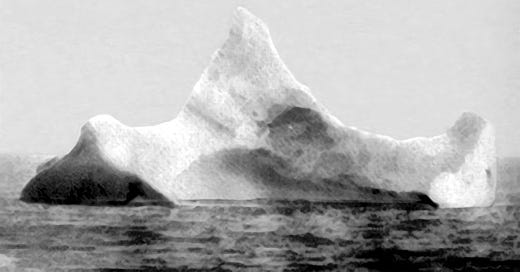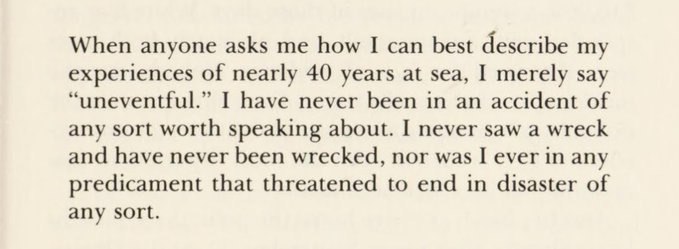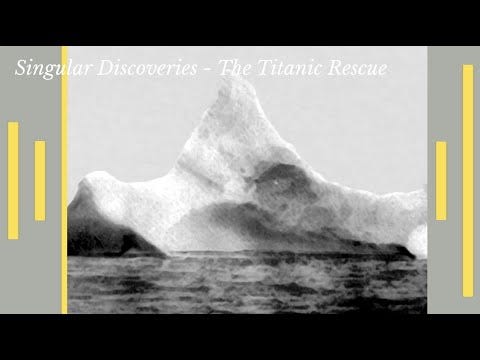The Titanic Rescue
The unsung heroes who saved 700 souls; PLUS Old Egyptian Pyramid and New English Journey

Update: The Titanic Rescue is now a podcast. Listen here.
The RMS Carpathia was three days out from New York when it received a message from the White Star liner. The 560-foot Tyne-built Carpathia was bound for Liverpool and the Adriatic. A Cunard transatlantic steamship, it was about one-third the size of the brand-new, unsinkable Titanic.
The message, received by 21-year-old Marconi wireless operator Harold Cottam, was a cheery greeting from three sisters on the Titanic to their uncle and aunt on the Carpathia. Charlotte Appleton, Malvina Cornell, and Caroline Brown (nee Lamson) wished to tell Charles and Josephine Marshall they were enjoying the Titanic’s maiden voyage from Southampton to New York. The aunt and uncle were asleep and the message would be held for them until the morning. That would be 15 April 1912.
As the clock passed midnight, Harold Cottam prepared to end his shift and go to bed. The Carpathia had only one wireless operator, so the system would be unmanned until he woke up. Cottam, from Southwell in Nottinghamshire, had removed his jacket and was bending down to unlace his boots – fortunately still wearing his headset – when he overheard a message from the Marconi station at Cape Cod advising that they had a batch of messages for the Titanic. He decided to be helpful and relay the messages to the White Star liner. But he received an unexpected reply: “Come at once. We have struck a berg. It's a CQD [distress signal], old man.” Cottam asked the liner to confirm what he was hearing, which it did. The Titanic was sinking.
Cottam hurried to the bridge to inform the first officer, and the two men rushed to the captain’s cabin and burst in without knocking. Captain Arthur Rostron had been a seaman since his early teens. Now 42, he had almost two decades of experience on Cunard liners. He was well-respected and known for his infectious energy. His crewmates nicknamed him “The Electric Spark.” He didn’t drink, smoke or swear, and could often be seen at his bridge lifting his cap and offering a silent prayer. Rostron was also known for his quick decision-making. The news from the Titanic snapped him awake and sprung him into action.
Rostron immediately ordered that the Carpathia turn around and race towards the stricken ship. It was 12:35 am. The Titanic was 58 miles to the northwest. At a maximum speed of 14 knots, Rostron calculated it would take four hours to reach her. “Tell them we are coming along as fast as we can,” he told Cottam. Then he woke the chief engineer and ordered him to divert “every particle of steam” to the engines. While the Carpathia’s 700 passengers slept, the ship raced towards the Titanic – and the ice field.

Unwilling to waste a minute, Rostron called his officers to the bridge and issued a list of orders to ensure the ship was fully prepared for its rescue mission. The chief and first officers were to call all hands and prepare the boats, gangways and winches. The pursers would receive the survivors and record their names. The ship’s doctors would set up in the dining rooms to care for the sick and wounded. The stewards prepared coffee, soup and blankets. All officers’ cabins – including Rostron’s – were given up for the survivors. The crew would instruct the Carpathia’s passengers to remain in their cabins. And Rostron ordered signal rockets to be fired every quarter of an hour to reassure the Titanic that help was coming.
Rostron was well aware that he was sailing the Carpathia into a perilous ice field on the blackest of nights, and he doubled the lookout. As he stood on the bridge, Rostron raised his cap and mouthed a silent prayer. “Racing through the dark towards we knew not what,” he recalled, “I was fully conscious of the danger my own ship and passengers were sharing.” At about 2:45 am, a lookout spotted the first large iceberg – visible thanks to the fortunate reflection of a star on its surface. And around the same time, Rostron saw a green flash in the distance. “That’s her light!” he said. “She must still be afloat.”
“More and more now we were all keyed up,” recalled Rostron. “Icebergs loomed up and fell astern. We never slackened, though we altered course to avoid them. It was an anxious time with the Titanic’s fateful experience very close in our minds. There were 700 souls on the Carpathia. These lives, as well as the survivors of the Titanic herself, depended on the sudden turn of the wheel.”
Occasionally, Rostron and the lookouts glimpsed the green light. “We were getting pretty near the spot,” he recalled. But the hope that the green flashes had instilled was fading. “There was no sign of the Titanic. Had the giant liner been afloat, we would have seen her.” At 4 am, having reached the Titanic’s last known position, 30 minutes faster than anticipated at an unprecedented speed of 17 to 18 knots, Rostron ordered the engines to be cut. Now the green light could be seen low in the water. Rostron realised it was coming from a lifeboat. He gave the order to retrieve the boat, but as the Carpathia turned, a huge iceberg loomed out of the darkness. “It was necessary to move with the utmost expedition,” recalled Rostron.
The Carpathia avoided the berg and retrieved Emergency Lifeboat 2, which contained around 18 survivors, including Titanic officer Joseph Boxhall. Rostron had Boxhall brought to the bridge. “The Titanic has gone down?” asked Rostron, aware of the likely answer. “Yes,” replied Boxhall, his voice breaking. “She went down about 2:30.” It was now 4:10 am, so the survivors had been afloat for over an hour and a half.
“Alas, that we had not been nearer!” said Rostron. “But there was no time for vain regrets. Daylight was just setting in, and what a sight that new day gradually revealed! Everywhere were icebergs. Stretching as far as the eye could see were masses of them.” Rostron had a junior officer count them. There were 25 that reached more than 200 feet above the water and dozens more that were 50 to 150 feet high. “Amid the tragic splendour of them, as they lay in the first shafts of the rising sun, boats of the lost ships floated.”
The lifeboats were scattered over a distance of around four miles. There was hardly any wreckage visible on the surface – the Titanic had taken almost all of its fixtures and fittings to the ocean floor. Rostron spotted only one body. Slowly, the Carpathia manoeuvered through the ice field, picking up the boats and bringing in the survivors using ladders, chair slings and ropes. “One thing stands out in my mind about it all – the quietness,” recalled Rostron. “The stupendous nature of the tragedy, it was too big to assimilate at once.”
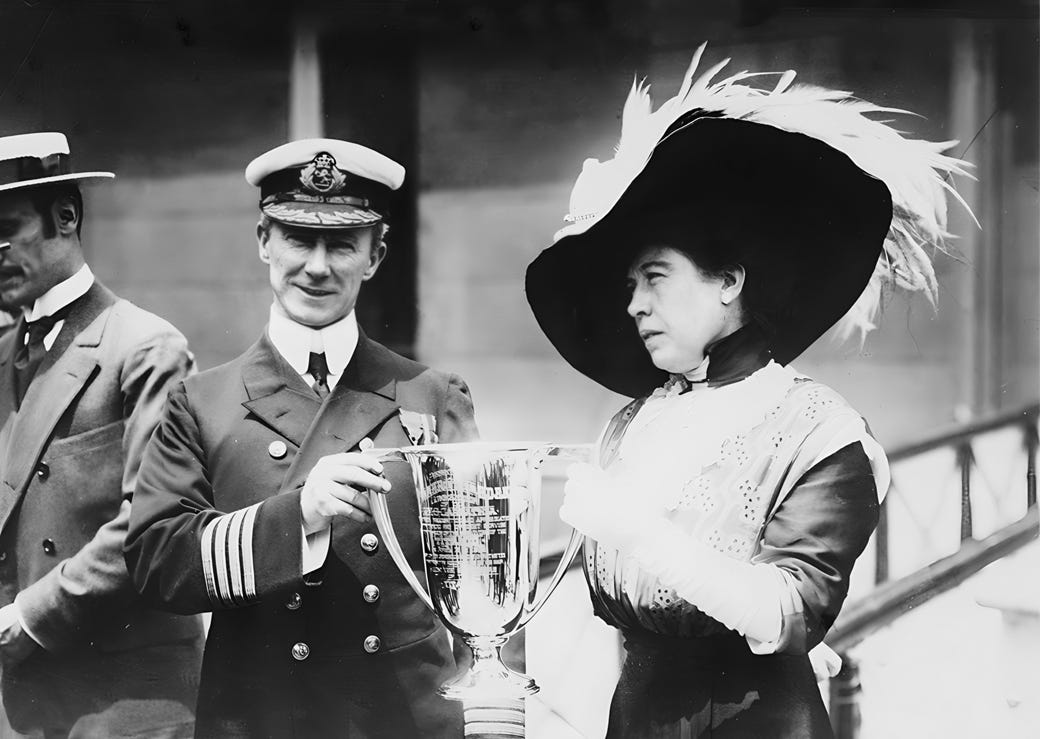
At about 6 am, a steward knocked on the door of the cabin of Mr and Mrs Marshall and told them that three ladies wished to see them. The uncle and aunt had slept through the commotion and were confused and dumbfounded to see their nieces standing on the Carpathia. The three sisters had escaped in the Titanic’s lifeboats. (Caroline was reported to be the last person placed in the crowded Collapsible D – the last lifeboat to leave the Titanic, after her young cousin, Edith Evans, gave up her place, saying, “You go first, you are married and have children.” Edith went down with the ship.)
After more than four hours, the last boat was recovered. The Carpathia had rescued 706 people. One seaman died following the rescue, leaving 705 survivors. The Titanic had been carrying an estimated 2,222 people. Other ships arrived, but no one else was saved.*
As the Carpathia floated above the Titanic’s grave, Captain Rostron held a brief remembrance service in the first-class dining room. Then he sailed back to New York, negotiating ice and fog and arriving on the night of 18 April amid a ferocious thunder and lightning storm. Harold Cottam manned the wireless throughout the journey, relaying messages for the survivors until he collapsed from exhaustion.
A fleet of small boats carrying relatives and pressmen swarmed around the ship as she entered the harbour. Eventually, the Carpathia docked at Pier 54 – the berth the Titanic never reached – and the survivors went ashore to tell the world about the fate of their unsinkable ship.
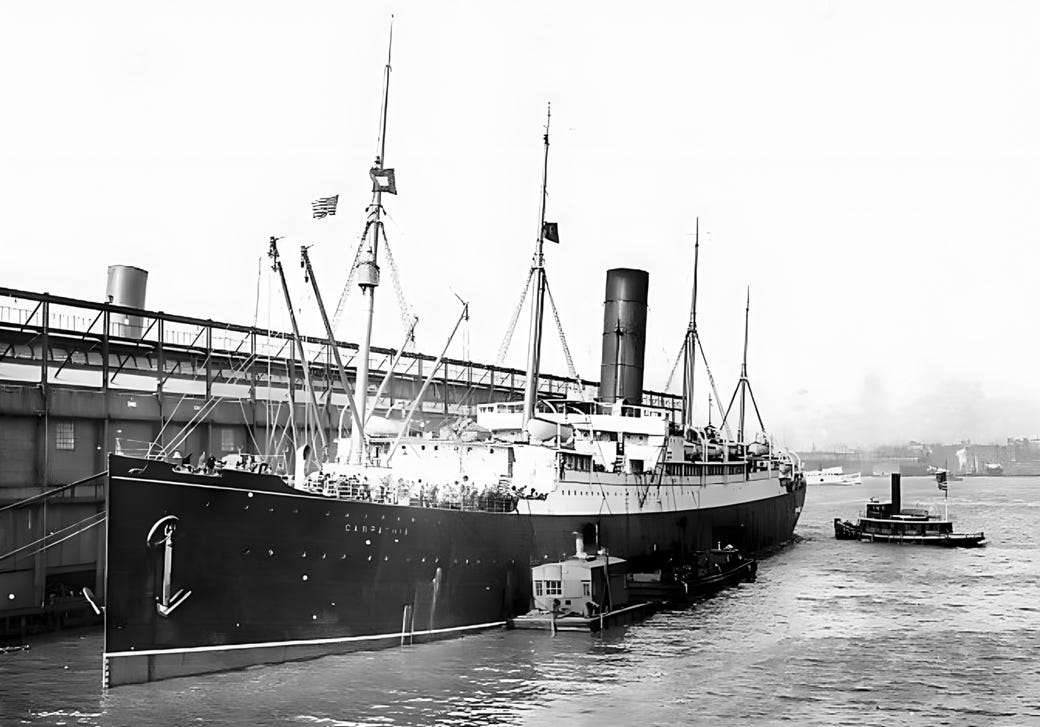
Captain Rostron was a hero before he set foot on land, although he declined to speak to the press or his many subsequent passengers about the Titanic. He was awarded a Congressional Medal of Honour in the US and a Knighthood in the UK. Sir Arthur Henry Rostron went on to captain the RMS Mauretania and became Commodore of the Cunard fleet. He died in 1940, aged 71.
The Carpathia was torpedoed and sunk by a German U-boat in 1918.
As for Harold Cottam, he was also a modest hero, bestowed with medals and praise but avoiding the limelight. He was initially criticised at the US inquiry for failure to show “proper vigilance” (and Rostron told the inquiry he did not know Cottam’s name) but was subsequently credited as the man whose swift actions enabled the rescue of the Titanic survivors. Cottam died in 1984, aged 93. He has a blue plaque labelled “Unsung Hero” in his retirement village of Lowdham, Nottinghamshire. His medals and paperwork were sold at auction in April 2023.
In 1931, Captain Rostron published a book, Home From The Sea. “My late passengers can now read of the things I would never talk about,” he wrote, “and I would mention that it was the wireless officer in the Carpathia [once again omitting Cottam’s name], through his attention to duty, and his interest in his work, that I am indebted for the opportunity to do something really useful, and it was then that I got my feet firmly planted on the ladder of success.”◆
This post was written and scheduled before the events involving the lost Titan submersible. You can read more about the Titan from the New Yorker’s Ben Taub in this piece. And you can find the strangely coincidental tale of another Titan in the very first edition of Singular Discoveries.
Recommended
Unknown: The Lost Pyramid (Netflix)
This feature-length documentary follows two Egyptian archaeologists, Dr Zahi Hawass and his protege Dr Mostafa Waziri, as they attempt to find the undiscovered pyramid of a forgotten king. Hawass, billed as a real-life Indiana Jones, has his team dig for the Pyramid of Huni in the Saqqara region while Waziri searches nearby tombs. What’s fascinating about this doc is that the camera takes us with the team as they break open the tomb entrances and descend into shafts that might not have been disturbed for 2,600 years. And, without giving too much away, they do make some remarkable discoveries. Hawass and Waziri are both larger-than-life characters, particularly Hawass, who sits chewing on a cigar as his underlings hurry to hold maps in front of him and rotate a huge stone tablet so he can read the hieroglyphics on it without bothering his legs. You can find it on Netflix.
The Full English by Stuart Maconie
An entertaining modern take on JB Priestley’s English Journey through the eyes of Stuart Maconie, esteemed author and Radio 6 Music DJ. The book sees Maconie follow in Priestley’s footsteps from Southampton to Newcastle to Norwich. Maconie might be his generation’s Priestley, but with a more agreeable demeanour. Priestley was full of cold and miserable when he visited my native Tyneside. Unlike Priestley's gloomy portrayal, Maconie presents a more optimistic and updated depiction of the region and the country. You can find this engaging read on the Singular Discoveries Amazon bookshelf.^
Meanwhile over on Twitter, Elon Musk is proving that having a daddy who owns an emerald mine doesn't necessarily make you clever. Twitter is basically unusable now, which is a shame. I’ve joined rival upstarts Mastodon and Threads, although I’m not actively using either yet. The best place to find me is still here or at stuffbypaulbrown.com.
https://twitter.com/paulbrownUK/status/1674336673167990784?s=20
[If the above tweet doesn't embed, it’s because Elon broke it. Let that sink in.]
And finally, the "uneventful" experiences of Captain Edward John Smith, interviewed in 1907, five years before he took command of the RMS Titanic:
More fun next time. Please do share and subscribe.◆
Update: The Titanic Rescue is now a podcast. Listen here.
*These numbers are still disputed. Some sources say there were up to 712 survivors. But Rostron stated at the US inquiry that the Carpathia rescued 706 people, and one died on the return to New York, leaving 705 survivors. The British inquiry put the death toll at 1,503 and the US inquiry at 1,517, putting the total number of passengers and crew on the Titanic between 2,208 and 2,222.
Main sources: Home From The Sea by Arthur H Rostron (1931); The Night Lives On by Walter Lord (1986); Titanic Inquiry Project, US Senate Inquiry, Testimonies of Arthur H Rostron and Harold T Cottam; “Titanic’s CQD Caught by Lucky Fluke”, New York Times, 19 April 1912.
^This publication features Amazon affiliate links. If you use them, I may receive a few pennies to help fund the newsletter. See our Amazon bookshelf here.


